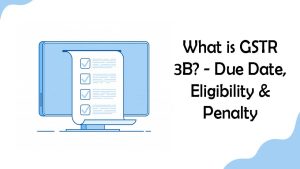Composition Scheme in GST is now an option tax levy technique engineered for small taxpayers whose turnover is up to 1.5 Crores.
Acknowledging their importance, the government has made specific regulations under GST to make sure a lower compliance load and better growth for such companies.
This information will help you determine what to expect under the GST Composition Scheme as Composite Dealers / Composite Taxpayers.
GST composition scheme for composite taxpayers or small taxpayers is the perfect balance where various Indian companies survive. It offers taxpayers a few benefits, which include:
Ease of Compliance – A business with an annual turnover of Rs. 1.5 crore would be one with an average billing cycle of 1.5-2 lakes per month. It could be a small trader, owner of a grocery store, a mobile store, or a similar profile. Ease of procedures is by far the most critical aspect to them and in adding to a uniform system of taxation.
GST assist here by offering a quarterly filing system with a composite dealer rather than a monthly one. They must file GSTR 4 form, which would be a quarterly filing form.
Thus, each month the taxpayer is free from both the inconvenience of filing multiple forms and can concentrate his / her energy on the business growth.
Lower Tax Liability – Previous tax rate approved under this scheme for taxpayers was:
That being said, as per Notification 50/2020 dated 24 June 2020, the same has been revised.
| SL no. | Section under which composition levy has opted | Category of registered persons | Rate of tax |
| (1) | (1A) | (2) | (3) |
| 1 | Sub-sections (I) and (2) of section 10 | Manufacturers, other than manufacturers of such goods as may be notified by the Government | ½ % of the turnover in the State or Union territory |
| 2 | Sub-sections (1) and (2) of section 10 | Suppliers making supplies referred to in clause (b) of paragraph 6 of Schedule II | 2 ½ %. of the turnover in the State or Union territory |
| 3 | Sub-sections (I) and (2) of section 10 | Any other supplier eligible for composition levy under sub-sections (1) and (2) of section 10 | ½ %. of the turnover of taxable supplies of goods and services in the State or Union territory |
| 4 | Sub-section (2A) of section I0 | Registered persons not eligible under the composition levy under sub-sections (1) and (2), but eligible to opt to pay tax under sub-section (2A), of section 10 | 3% of the turnover of taxable supplies of goods and services in the State or Union territory. |
The taxpayer pays a flat rate of tax irrespective of what they produce, deliver as a service or trade they carry on.
In addition, it is voluntary and the eligible person who opts to pay tax under such a scheme may pay tax each quarter at an approved percentage of his turnover, rather than paying tax at a standard rate.
High Liquidity – The taxpayer needs to pay a flat rate of tax irrespective of what they produce, deliver as a service or trade they carry on.
In addition, it is voluntary and the qualified individual who opts to pay the tax under such a scheme may pay tax each quarter at an approved percentage of his turnover, rather than paying tax at a standard rate.
Growth Margin – Although a composite dealer’s annual turnover is significantly smaller than a regular taxpayer, he/she may still have a strong presence on the market and earn better profit margins than his / her competitors.
With the nominal tax rate for the composition scheme, the composite dealer has the benefit of delivering better quality products or services at a reasonable price and gaining a good market share.
How to Opt-in for Composition Scheme under GST?
A taxpayer wishing to register his business or services under the composition scheme must inform the government by submitting CMP-01 and CMP-02 forms
The closing date for opting in for FY 2020-21 composition scheme has elapsed. (March 31, 2020),
According to GST Notification 30/2020, the CGST Rules have been modified to allow opting for the composition scheme for FY 2020-21 to be lengthened until 30 June 2020, the statement in FORM GST ITC-03 is to be filed by 31 July 2020 and to enable the cumulative application of the situation in Rule 36(4)
Looking for a GST consultant? – Contact Us



